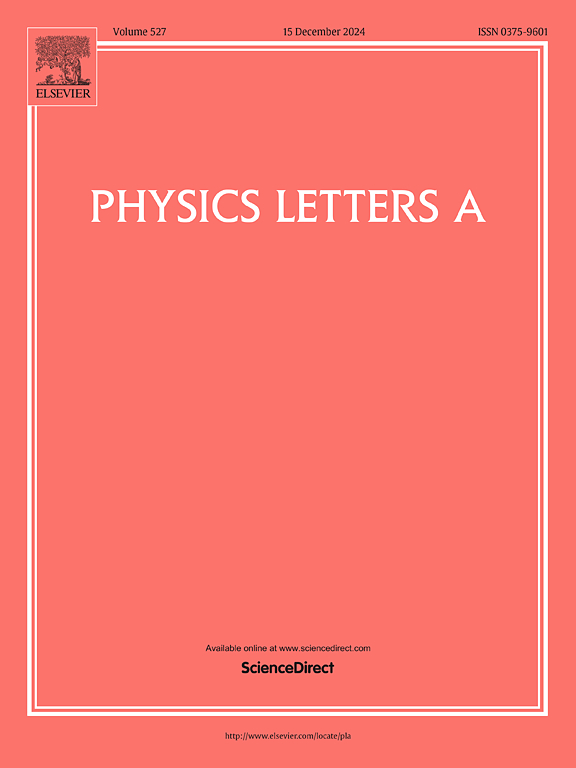Efficient beam spatial profiles via three-wave mixing in tunneling quantum dots
IF 2.3
3区 物理与天体物理
Q2 PHYSICS, MULTIDISCIPLINARY
引用次数: 0
Abstract
This paper explores the effects of orbital angular momentum (OAM) and phase sensitivity in Three-Wave Mixing (TWM) processes within a quantum dot (QD) system. We analyze the efficiency, spatial, and phase characteristics of the generated TWM beam as influenced by varying control beam parameters. Our results demonstrate that the efficiency of the TWM beam exhibits a double-peak structure, with increased tunneling enhancing the efficiency at detuning values away from resonance. Additionally, the evolution of efficiency during beam propagation shows distinct behaviors depending on the tunneling parameter, with larger values initially increasing efficiency before slightly decreasing, while smaller values result in a steady increase. The phase sensitivity of the QD system allows for spatially dependent effects, as evidenced by the control beam's spatial profile being transferred to the generated TWM beam. The intensity profiles reveal that a Gaussian control beam results in a central peak, whereas vortex beams with nonzero OAM induce doughnut-shaped intensity profiles with zero central intensity. The observed phenomena are attributed to the closed-loop structure of the QD system enabled by electron tunneling, which preserves and transfers the spatial and phase attributes of the control beam to the TWM beam. These findings highlight the potential for precise control over TWM beams through phase and spatial modulation, with implications for advanced optical applications such as beam shaping, imaging, and communication.
求助全文
约1分钟内获得全文
求助全文
来源期刊

Physics Letters A
物理-物理:综合
CiteScore
5.10
自引率
3.80%
发文量
493
审稿时长
30 days
期刊介绍:
Physics Letters A offers an exciting publication outlet for novel and frontier physics. It encourages the submission of new research on: condensed matter physics, theoretical physics, nonlinear science, statistical physics, mathematical and computational physics, general and cross-disciplinary physics (including foundations), atomic, molecular and cluster physics, plasma and fluid physics, optical physics, biological physics and nanoscience. No articles on High Energy and Nuclear Physics are published in Physics Letters A. The journal''s high standard and wide dissemination ensures a broad readership amongst the physics community. Rapid publication times and flexible length restrictions give Physics Letters A the edge over other journals in the field.
 求助内容:
求助内容: 应助结果提醒方式:
应助结果提醒方式:


